The Zoo
We hadn't seen any pandas in China yet - so it
was off to the zoo for us!
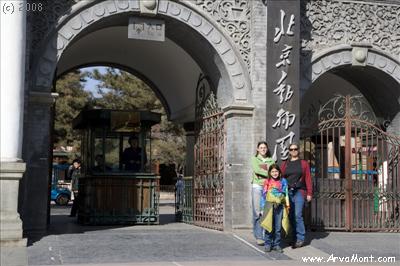
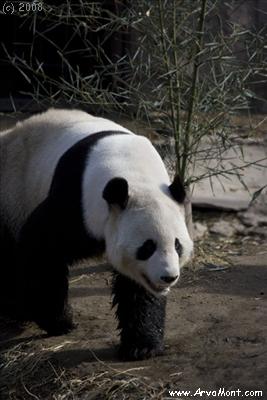
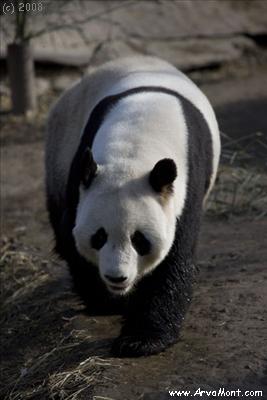
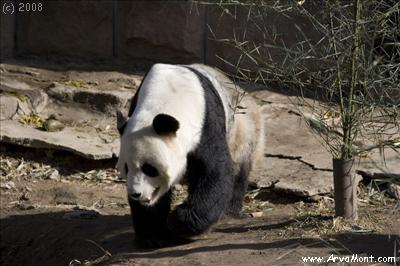
It took a long time to get these few action shots! Mostly the pandas were
lying around or engaged with their keepers, so all we saw were backsides!
Even if they aren't really doing much, though, the pandas are very popular with the
locals. Crowds formed around each of the enclosures with pandas.
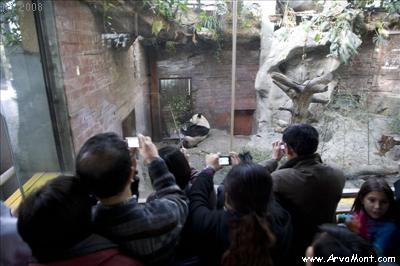
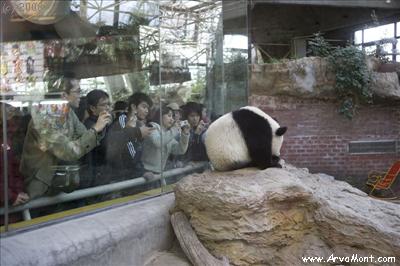
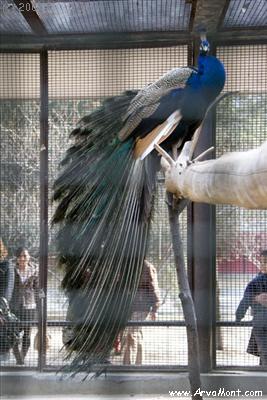
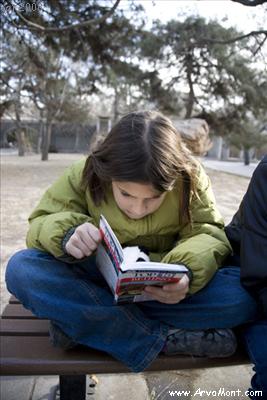
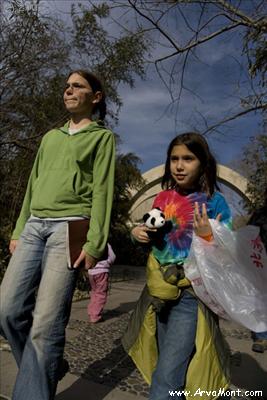 Introducing Smokey, the panda.
Introducing Smokey, the panda.
The Forbidden City
The Forbidden City is the palace
built by the Ming Emperor Yung-Lo beginning in 1406. Access to the palace
was forbidden to most, even royal family members and government functionaries
were only permitted to enter certain areas. Only the emperor had access to
all parts of the palace. The last Ch'ing emperor Pu-Yi abdicated in
1912 at the age of 6. He was allowed by the new rulers to live out his
life in the inner courts of the Forbidden City. (Though in 1924 he escaped
and went to live in Manchuria, which was a Japanese concession, where he took
the name Henry. The Japanese installed him as Emperor, he was captured by
the Russians and returned to China in 1950 for trial as a war criminal. He
was pardoned in 1959 and upon his release the last emperor became a gardener in
the Bei Hai Park near the Forbidden City.)
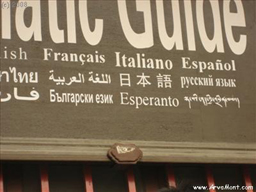
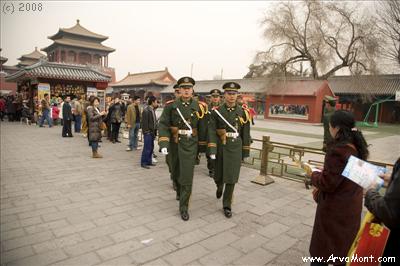 In
1914 the outer courts of the palace were turned into the Palace museum and were,
for the first time, open to the public. The rest of the complex was added
during the communist era. Since then it has been meticulously maintained.
There is a lot of history and culture to be absorbed here. On
the way into the Forbidden City, you can rent an audio guide. It is
available in many languages, including Esperanto! We chose English.
In
1914 the outer courts of the palace were turned into the Palace museum and were,
for the first time, open to the public. The rest of the complex was added
during the communist era. Since then it has been meticulously maintained.
There is a lot of history and culture to be absorbed here. On
the way into the Forbidden City, you can rent an audio guide. It is
available in many languages, including Esperanto! We chose English.
The Forbidden City is a huge place, but unlike other palaces we have visited,
this one is a series of smaller, single purpose types of buildings.
Which means when moving from one purpose to the next, the inhabitants had to
pass through the outside. A few thoughts this brings to mind: Did
they have a different pair of shoes or slippers for every building? What
did they do in the winter?
We entered through the Meridian Gate on the south side of the Forbidden City
adjacent to Tiananmen Square. This was always the "public" entrance.
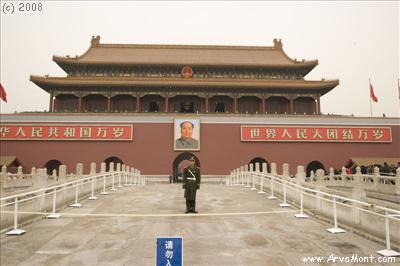
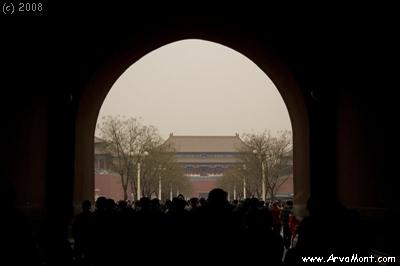
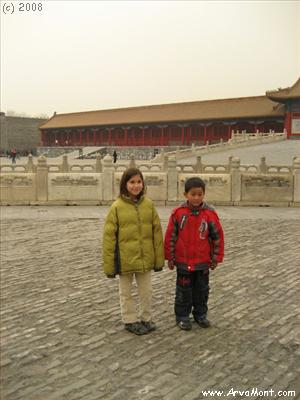
We had just crossed over one of the five bridges over the Golden Water when a
woman approached us and asked if she could take a picture of her son with ours.
< Here he is. (Since Yannis' hair has gotten quite
long, people have started guessing that Anika may be a boy, with long hair like
his father. Perhaps it is her boyish clothes or her rebellious nature?
More likely, it would be extremely offensive to call a boy a girl!)
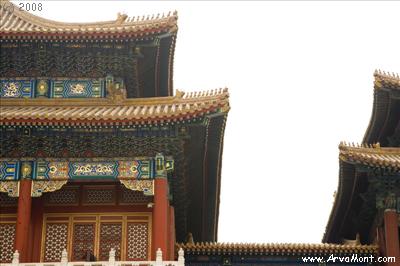
The most important buildings and courts are along the central North-south axis.
They all face south to honor the sun. We passed around the Gate of Supreme
Harmony, which was covered in scaffolding, to see the most important
building in the Forbidden City - the Hall of Supreme Harmony. You can tell
it is the most important, because the buildings have a visual ranking system -
the number of animals at the roof corners. The more animals, the more
important the building. The Hall of Supreme Harmony was 11.
There are two smaller buildings on the east and west of the courtyard facing the
Hall of Supreme Harmony. The one on the west side has my favorite name:
The Pavilion of Reason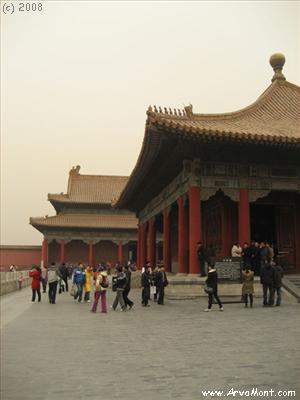 Enhancement.
Enhancement.
^The Hall of Supreme Harmony
The Hall of Supreme Harmony is where the Emperor met with his government
functionaries. As he lived at the back of the complex, to get here he
first passed through The Gate of Heavenly Purity, the Hall of Earthly
Tranquility and the Hall of Preserving Harmony.
The Gate of Heavenly Purity marks the boundary of the inner court, which was
reserved strictly for family - the Emperor, Empress and concubines, of which
there were many! (In fact the last Empress Dowager - Cixi - came to the palace as
a low ranking concubine. She was the most powerful person in the palace at the end of
the dynasty. Her son was chosen to be the next emperor by his father, as
the Empress had no sons. When he died without children, she chose the next
emperor: her nephew, whom she adopted, a child for whom she acted as regent. When he came of age and
chose no longer to do her bidding, he was ousted and she chose another distant
imperial relative as emperor: the 3 year old Pu Yi, whose demise we heard about
above!)
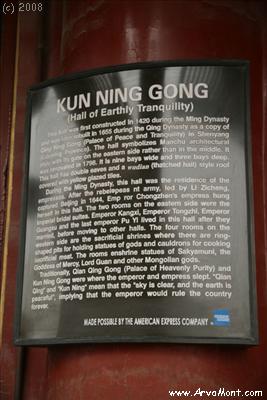
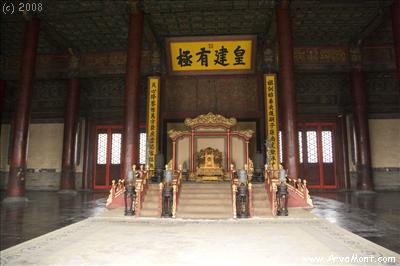
> The Hall of Earthly Tranquility with the Hall of
Preserving Harmony behind it.
< The Hall of Preserving Harmony
< We enjoyed the fact that the Hall of Earthly
Tranquility was brought to us by American
Express! Click on the photo to see an enlargement.
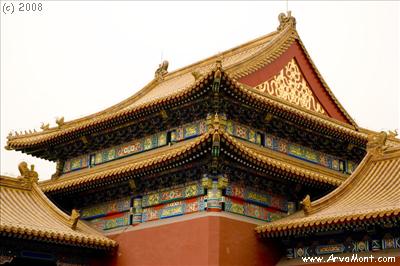
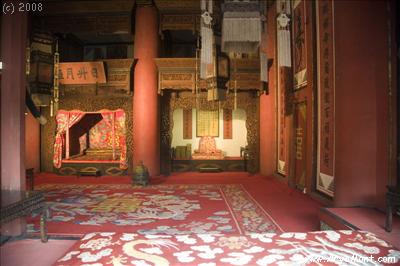
Passing through the Gate of Heavenly Purity to come to a Hall used as a
throne room and bridal chamber. ^
Behind this hall, still on the north-south axis, but now at the very back of
the Forbidden City, is the Imperial Garden. It has some interesting
features. We liked the trees that were pruned to take on the shape of an
arch. I believe they were attempting to take on the shape of a Chinese
character that looks a little bit like a lambda:
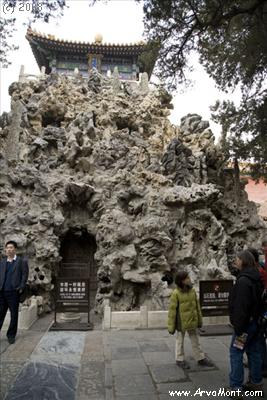
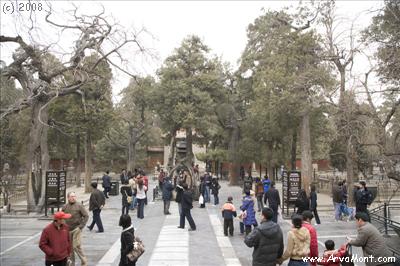
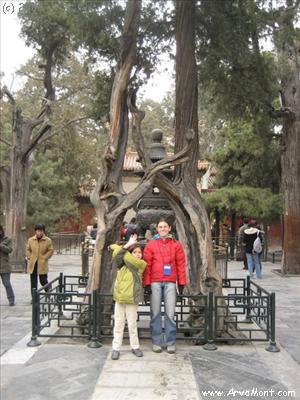
^ The Hill of Accumulated Elegance.
Also in the inner court were 26 separate halls, one representing each
province in the land. It is in these halls that the Empress and the
various concubines lived. By the time we reached the back of the
Forbidden City we were too tired to tour each of these, so we just visited
the courtyard commanded by Cixi, the last Empress Dowager.
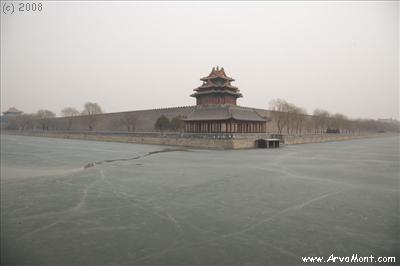 < The Gate House on the northwest side of the Forbidden City,
and the ice filled moat.
< The Gate House on the northwest side of the Forbidden City,
and the ice filled moat.
Jade Island, Bei Hai Park
This park is immediately northwest of
the Forbidden City. It is where is it rumored that Pu-Yi worked as a
gardener.
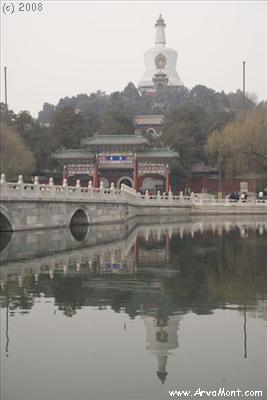
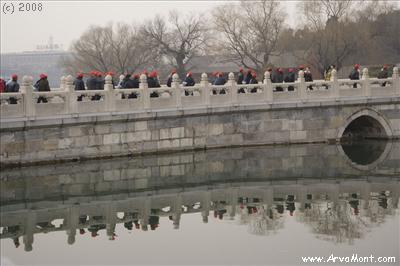
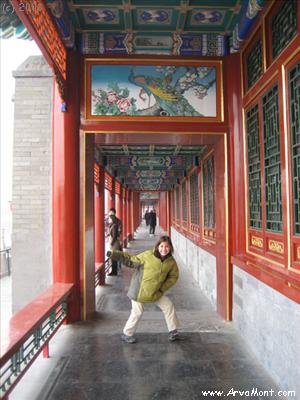
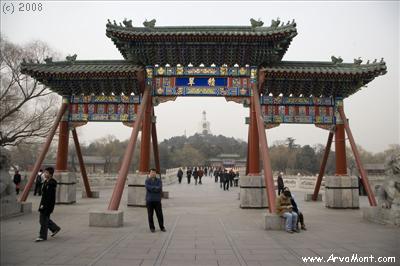
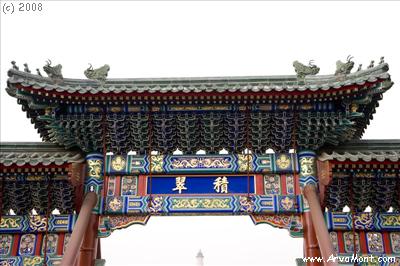
The Subway
It's a popular way to get around town because it is fast, easy and very
inexpensive (just over $1 US total for the 4 of us each way)
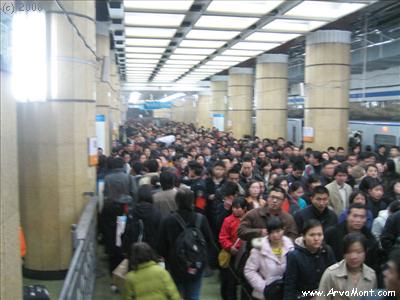
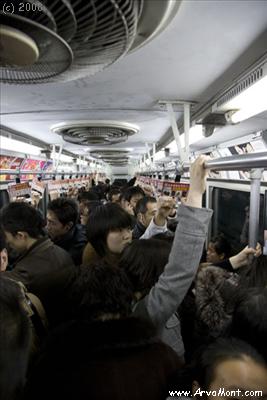
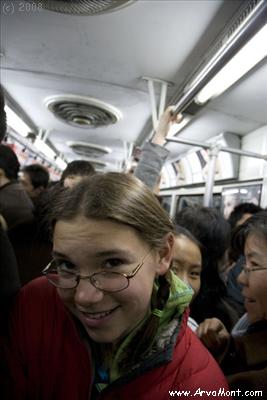
(this image is from
rush hour on Friday as we returned from the zoo)
And the cars were just as jammed on this Sunday afternoon.
Around Town
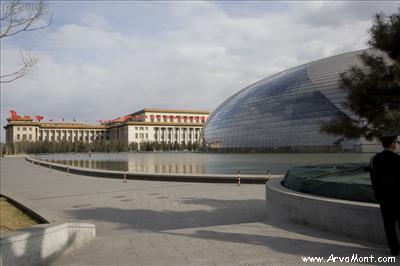
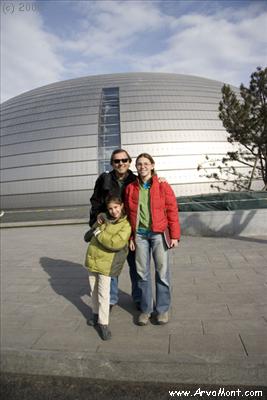 The new concert hall. You pass underneath the moat to enter! It was all
cordoned off when we were there, because the building behind it is where the
People's Congress was meeting.
The new concert hall. You pass underneath the moat to enter! It was all
cordoned off when we were there, because the building behind it is where the
People's Congress was meeting.
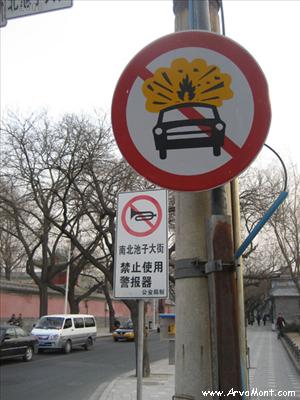
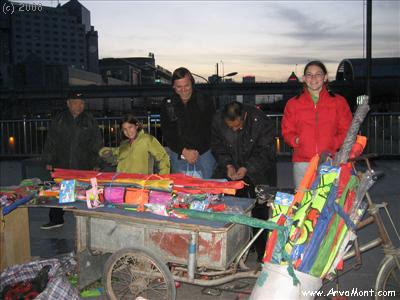
^ What is this sign forbidding?
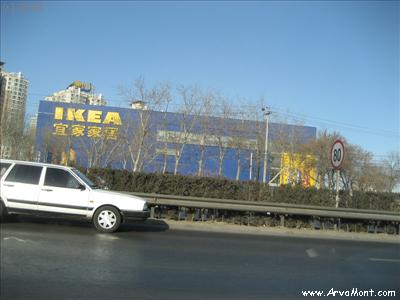
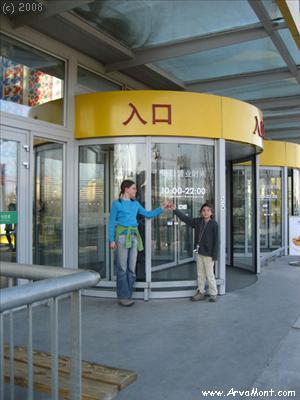 The sign above the door means Man and Door - Entrance.
The sign above the door means Man and Door - Entrance.
Oh look - Ikea!
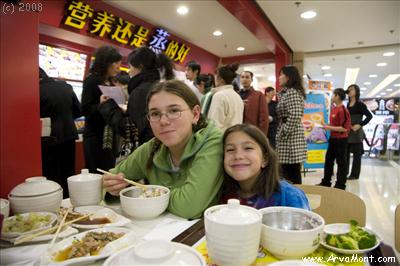 < Chinese fast food
< Chinese fast food
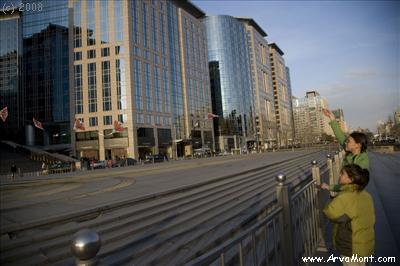
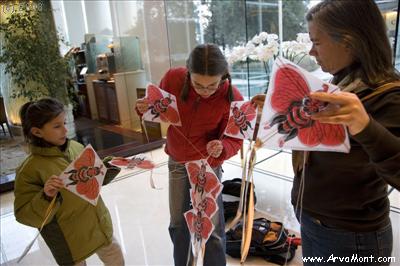
Kite flying - it was amazingly difficult to find an open area near the Forbidden
City, so we improvised. Unfortunately, swirling winds amongst skyscrapers
can result in a tangled mess. But it was fun, and we now travel with them
looking for open areas.
The Great Wall
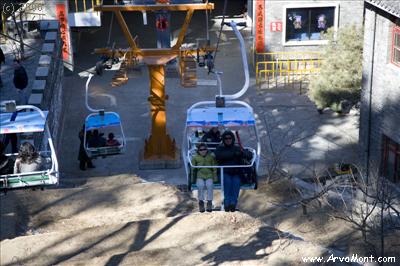 Getting up to the Wall
Getting up to the Wall
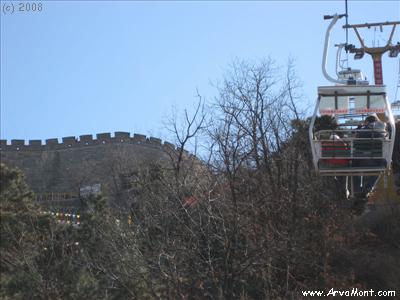
The Great Wall of China is a 4,160 mile long wall built across the erstwhile
northern border of China. It is Shih Huang-ti, the first emperor of a
united China, who is credited with connecting a number of existing defensive
walls into what we now call The Great Wall in the 3rd century BCE!
Though some of the wall segments were originally built as far back as
the 7th century! The wall is built along the crests and ridges of
mountains, for the best defensive position. With such a huge wall, you can
really only visit a part of it. We visited Mutianyu, a part that has been
restored, originally in the 1300s, and then again more recently. There are
other sections that are in ruins, for the archeology buffs, but it would be
harder to get feel for what it must have been like in its heyday.
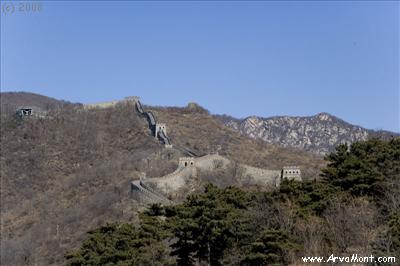
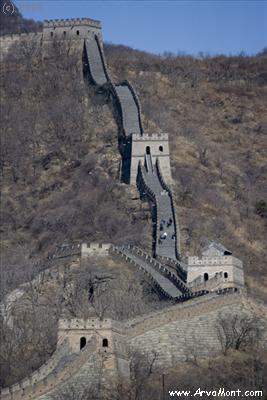
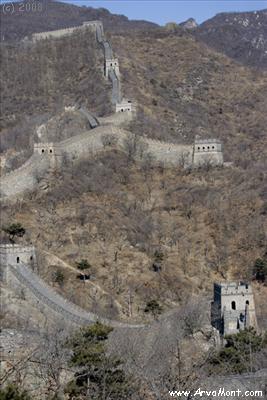
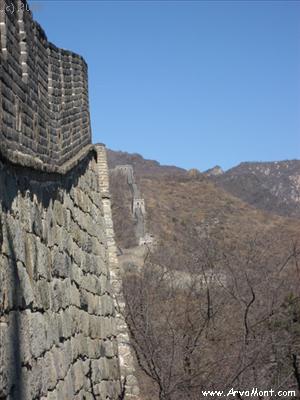
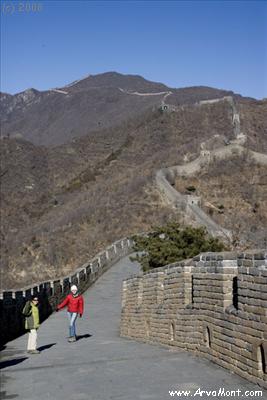
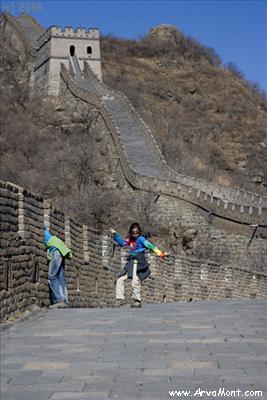
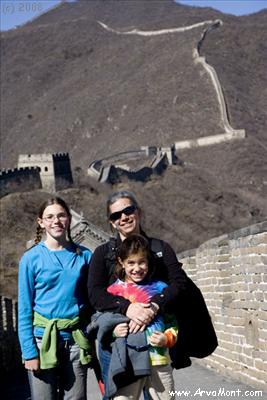
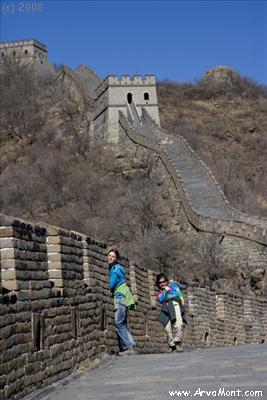
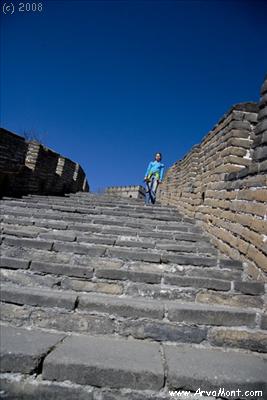
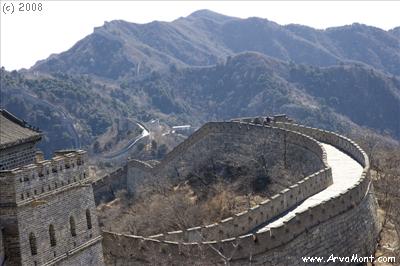
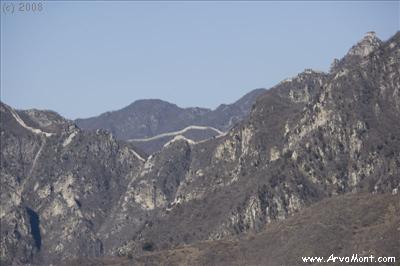
Nothing like a family stroll, picnic and, of course, kite flying on the Great
Wall.
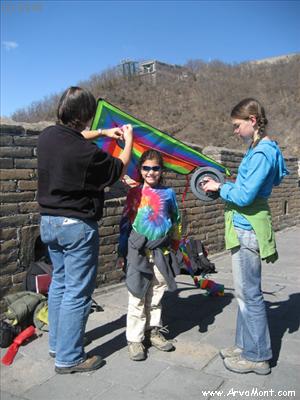
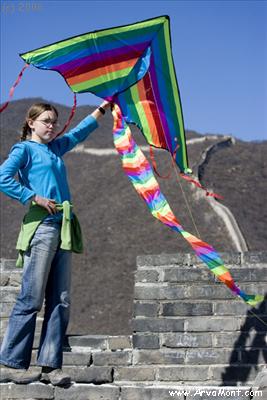
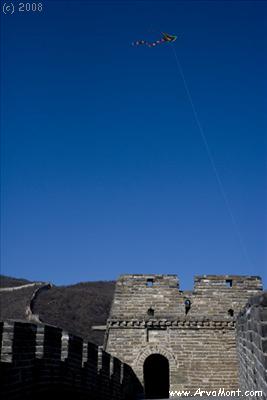
The winds were a bit tricky - calm most of the time, then swirling, twisting
gusts as the wind came up the hills. But we were eventually successful,
and it was pretty cool.
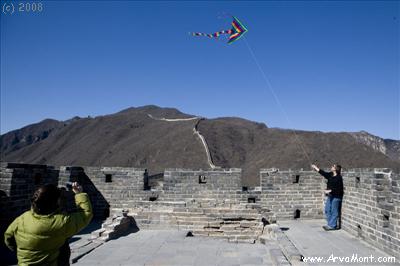
After many exhausting hours going up and down the mountains on the wall, we
returned to the car park on this great slide!
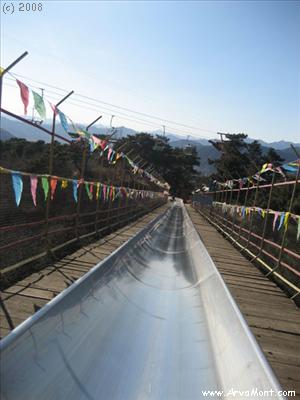
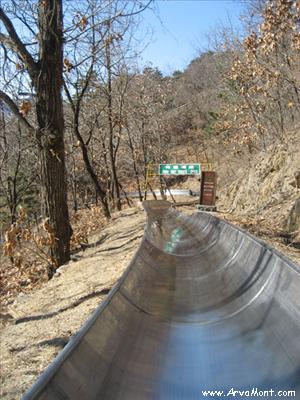
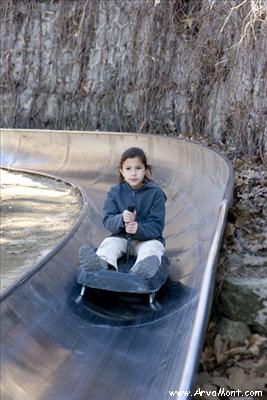
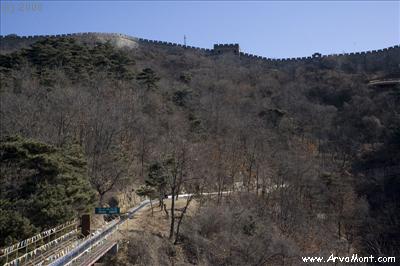
The 2008 Olympics
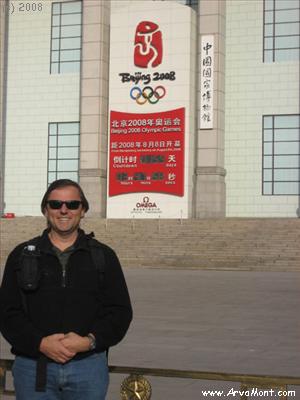
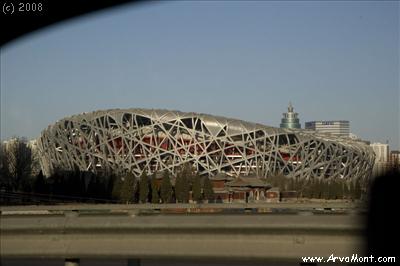
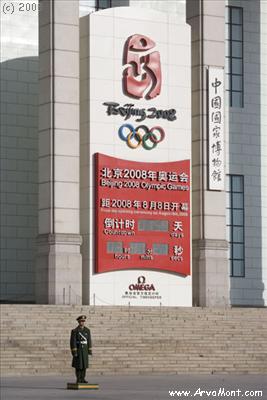
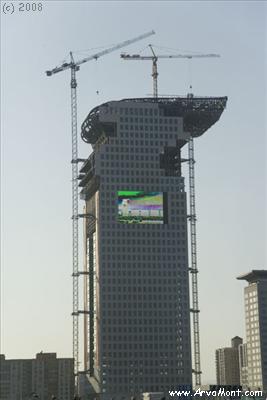
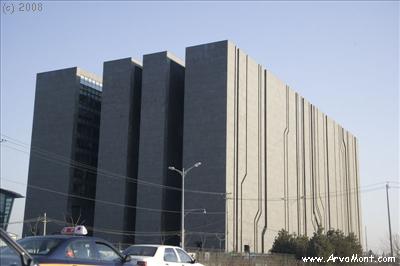
There were oh so many things still to
see in Beijing, but our time was up. From here we flew back to
Hong Kong, and this time we stayed there
to have a bit of a see.
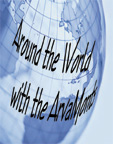 Around
the World With the ArvaMonts
Around
the World With the ArvaMonts

































































